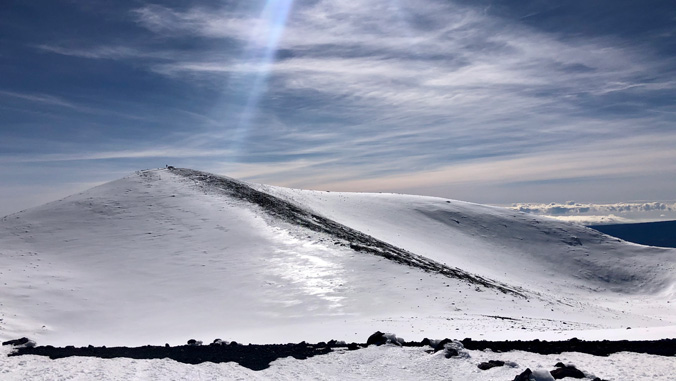
The University of Hawaiʻi Board of Regents (BOR) has scheduled a special board meeting for Thursday, December 16 (PDF), to receive the draft Master Plan for UH-managed lands on Maunakea. The public will have nearly six weeks to review the plan and submit testimony as the BOR will not deliberate or take action on the Master Plan until the next scheduled full board meeting on January 20, 2022.
The draft Master Plan for the University of Hawaiʻi Maunakea Lands; E Ō I Nā Leo (Listen to the Voices) (PDF) is available for review on the BOR website. The Master Plan serves as a framework for aligning land-use decisions in a manner that is consistent with UH’s mission and purpose. The master plan requires board approval to take effect and would replace the Master Plan the BOR adopted in 2000.
Following years of work by the university gathering input and in consultation with stakeholders, such as the Office of Hawaiian Affairs (OHA), the Department of Land and Natural Resources (DLNR), the Maunakea Management Board and Kahu Kū Mauna, the regents want to offer this opportunity to hear from the community before making a final decision.
The public can submit written testimony for both the December 16 and January 20 meetings by emailing bor.testimony@hawaii.edu or via an online form and/or register to provide oral testimony through a link on the meeting agenda. The December 16 meeting, scheduled to start at 8:30 a.m., is virtual, and will be livestreamed on the BOR meeting livestream page.
The university has already received more than 1,450 comments (online, telephone messages, U.S. Postal Service) on the draft of the new plan during a month-long public comment period that ended in mid-October. The plan submitted for the board’s consideration incorporates applicable comments received from the public and multiple stakeholder groups. A summary of outreach efforts can be found in Appendix A of the Master Plan.
The overarching goals of the Master Plan are to broaden Native Hawaiian and community participation in planning and programming; reduce impacts to the natural resources, especially in the summit region, by limiting development; and create better balance among cultural, environmental, scientific and recreational interests.
The Master Plan sets forth a framework for early decision making and community input to determine whether a particular land use should be allowed to proceed to permitting and environmental review by the Board of Land and Natural Resources and the DLNR, which regulate land uses in conservation districts.

